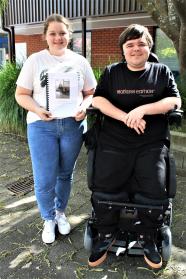Outstanding scholarship: Wheelchair-friendly trousers
Identifying the need and developing a design brief
Passion drove Emily Hollis to take on this project. She wanted to help someone in her school community. When her teacher suggested working with students in the Physical Assistance Centre (PAC), Emily agreed.
Through her research, Emily found a need for trendy, functional, wheelchair-friendly trousers, especially for teenagers. She identified a gap in the adaptive pants market. Designs were either too costly or too specifically targeted (for example, clothing for the elderly). She also found a bias towards flimsy material, minimal style, and ill-fitting closures.
Emily’s research revealed two kinds of adaptive pants design:
- designs where style topped comfort
- designs where comfort dominated over style.
Emily considered the needs of her client Ryan, a wheelchair-bound teenage male. Ryan uses his powerchair to travel to classes and, apart from physio stretching sessions, he spends most of his day sitting.
Her overall aim was to create trendy and functional trousers for Ryan. Emily set out to design stylish pants suitable for dressing, toileting, and sitting. She wanted to make pants that were:
- durable and would last at least two years
- comfortable for extended periods of sitting
- stain-resistant, cost-effective, and stylish.
Emily concluded, "The pants need to be comfortable as he spends most of his time in a wheelchair, but they also need to be stylish."
Research and consultation
To gain clarity, Emily approached several stakeholders. These included: Physical Assistance Centre students, parents, teachers, teacher aides, physical therapists, and occupational therapists.
Key take-aways from the consultation were:
- the possibility her design could be added to the school uniform
- the sensibility of designing male and female versions
- the needs and wants of primary stakeholder, Ryan
- the importance of function to suit a range of situations (for example, toileting, physical therapy, sitting for extended periods).
Emily researched existing products. She gathered manufacturing and retail prices and brands known for adaptive fashion, such as Rollitex, Easy Access Clothing, and EveryHuman. She also gained insight to what worked well and ideas for improving the design.
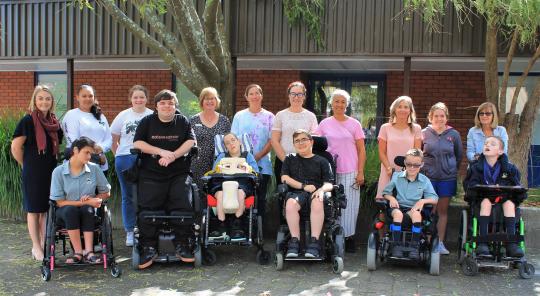
PAC unit students and teachers. Emily and Ryan third and fourth from left.
Designing a prototype
Trial and error and client feedback were key to the design process. First, Emily tested fabrics and components – such as zippers and Velcro flaps – for durability and usability.
Next, she sketched a range of designs and sought stakeholder feedback. She learned that if the side pockets are too low, they could get caught on wheelchair sides. By adding extra room, she would create pockets that would be easier to use and able to fit more inside.
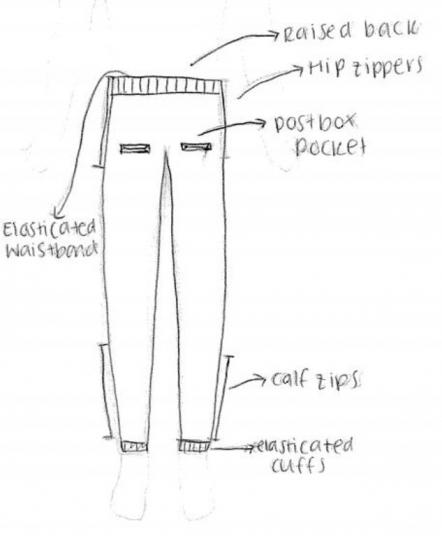
Final design sketch of pants.
After that, she designed the pattern, created a mock-up of the pants, and did the first fitting. Finally, she tailored the design numerous times until she had a suitable pattern.
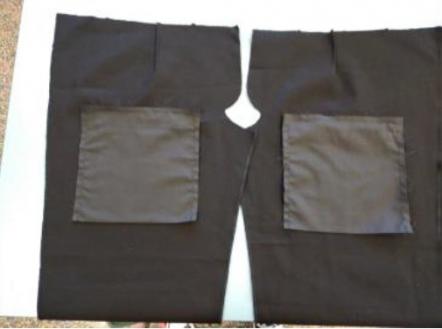
Fabric pocket design.
Testing and refining the product
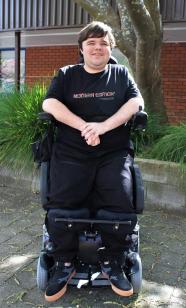
Ryan.
One of the benefits for students who do a project like this is receiving authentic feedback to inform the product development. Emily said the feedback she received helped her learn what she was doing well, where she could improve, and what she had overlooked.
She made alterations to her product in order to create a design that was:
- appropriate for a school uniform
- in line with client’s desire for comfort
- allowed wearers to fit in with the rest of the school
- better in terms of placement and number of pockets
- made of durable fabric.
Input from her client, Ryan, helped her reach a trendy and stylish design that met the needs of his social and physical environments.
"The final product of the pants that I created are fit-for-purpose in terms of the functionality and style."
Emily
"The pants overall were good and the material had some stretch … The waistband was stretchable but was tight, so didn’t ride down [and] the zips made it easy to turn [the pants] into shorts."
Client
His carers noted how functional the pants were and said “the placement of the zips [meant] people who wore splints could be easily dressed and undressed.”
Secondary stakeholder
Learning opportunities for your students
Doing a project like this provides opportunities to build relationships, increase knowledge, and develop transferable skills. Practical experience is inherent, too.
In Emily’s case, COVID-19 disrupted her plan and presented challenges. She said, "At first I was nervous." Wanting to complete the project to a high standard, she worried about the pandemic’s effects. She pressed on and learned to manage her time, to prepare for the unexpected, and to keep clear communication with stakeholders.
"I have been very pleased with the professionalism of Emily Hollis …."
Head of Faculty, Inclusive Education
"It was exciting to see Ryan wearing his pants. He was stoked he was wearing jeans …."
Secondary stakeholder
Assessment opportunities
| Number | Title | Credits |
| AS91608 | Undertake brief development to address an issue within a determined context (3.1) | 4 |
| AS91611 | Develop a prototype considering fitness for purpose in the broadest sense (3.4) | 6 |
| AS91616 | Demonstrate understanding of how the fitness for purpose of technological outcomes may be broadly interpreted (3.9) | 4 |
| AS91621 | Implement complex procedures using textile materials to make a specified product (3.21) | 6 |
| AS91623 | Implement complex procedures to create an applied design for a specified product (3.23) | 4 |
| AS91626 | Draft a pattern to interpret a design for a garment (3.26) | 6 |
Read Emily's scholarship report.

